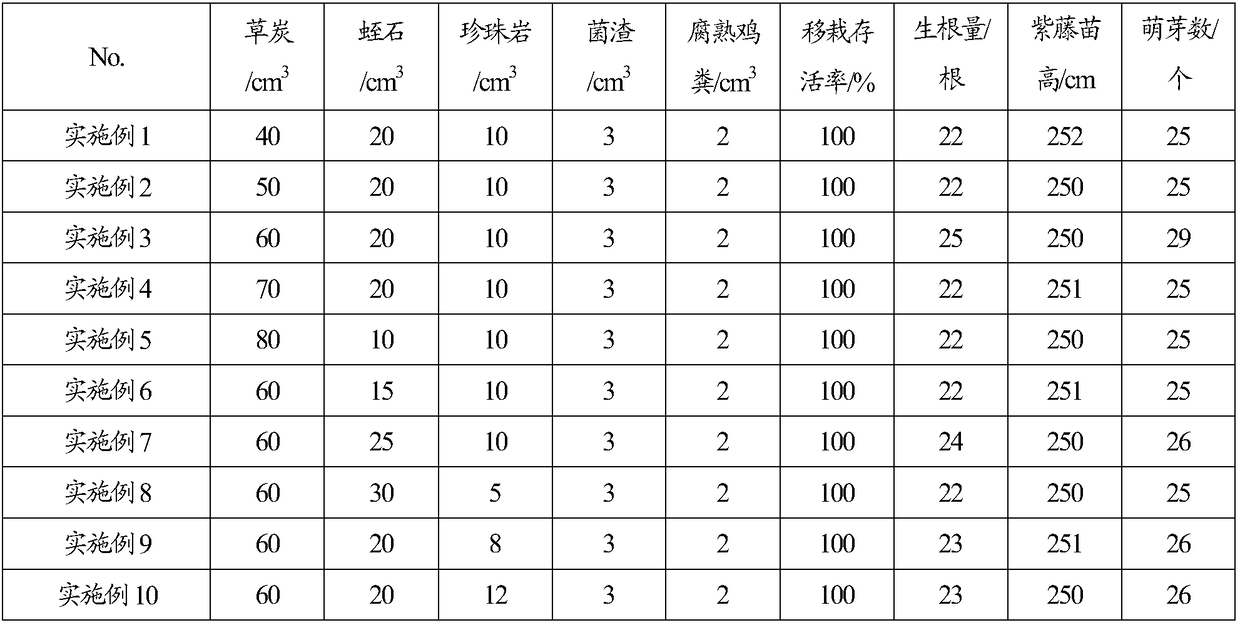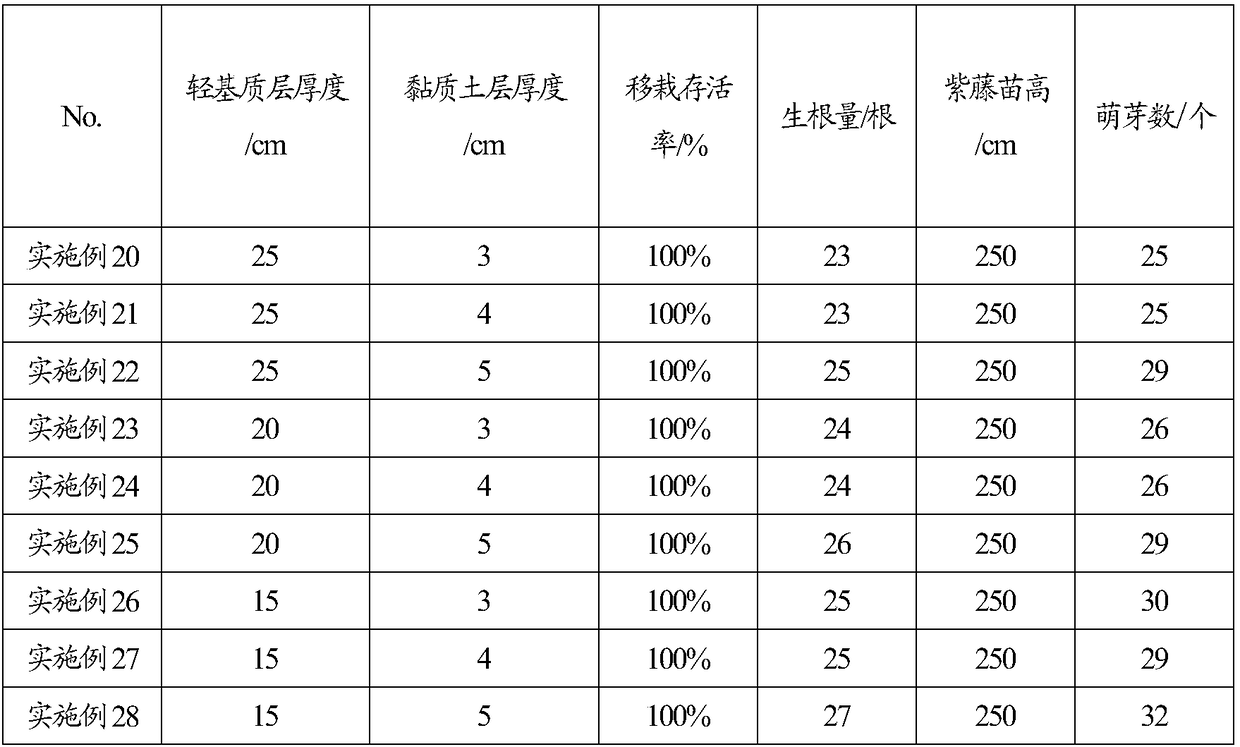Method for transplanting Chinese wistaria seedlings
A technology of wisteria seedlings and wisteria, which is applied in the field of plant breeding, can solve the problems of wisteria seedling material waste in garden applications, low survival rate of wisteria seedlings transplanted, affecting root growth, etc., to achieve increased propagation speed, stable center of gravity, and time-saving operation Labor-saving effect
- Summary
- Abstract
- Description
- Claims
- Application Information
AI Technical Summary
Problems solved by technology
Method used
Image
Examples
Embodiment 1~16
[0024] Preparation of light substrate: mix peat, vermiculite, perlite, bacterial residue and decomposed chicken manure according to the volume in Table 1 to obtain light substrate;
[0025] Layers are alternately laid to get clay soil and light substrate and put into wisteria seedlings: a root control container with a diameter of 70cm, clay soil is laid on the bottom of the container, which is the first layer of clay soil layer; the obtained The light matrix is laid on the first layer of clay soil layer, which is the first layer of light matrix layer; the clay soil is laid on the first layer of light matrix layer, which is the second layer of clay soil layer; Vertically put into the wisteria seedling root that seedling age is 10 years, and seedling height is 250cm; The described light matrix that obtains is laid on the described second layer clay soil layer, covers described wisteria seedling root, is the second layer of light substrate layer; the clay soil is laid on the se...
Embodiment 17
[0032] Mix peat, vermiculite, perlite, fungus residue and decomposed chicken manure in a volume ratio of 60:20:10:3:2 to obtain a light substrate.
[0033] Layers are laid alternately Take clay soil and light substrate and put them into wisteria seedlings: take a root control container with a diameter of 60cm, and lay clay soil on the bottom of the container, which is the first layer of clay soil layer; put it vertically Seedling age is the wisteria seedling root of 8 years, and the seedling height is the wisteria seedling root of 240cm; The light substrate obtained is laid on the first layer of clay soil layer, covering the wisteria seedling root, which is the first layer of light substrate layer; the clay soil is laid on the first layer of the light substrate layer, which is the second layer of clay soil layer; the obtained light substrate is laid on the second layer of clay soil layer On top is the second light matrix layer. The light matrix used and the clay soil volume r...
Embodiment 18
[0036] Mix peat, vermiculite, perlite, fungus residue and decomposed chicken manure in a volume ratio of 60:20:10:3:2 to obtain a light substrate.
[0037] Layers are alternately laid to take clay soil and light substrate and put them into wisteria seedlings: take a root control container with a diameter of 75 cm, and lay clay soil on the bottom of the container, which is the first layer of clay soil layer; The light matrix is laid on the first layer of clay soil layer, which is the first layer of light matrix layer; the clay soil is laid on the first layer of light matrix layer, which is the second layer of clay soil layer ; Lay the obtained light matrix on the second layer of clay soil layer, which is the second layer of light matrix layer; Lay the clay soil on the second layer of light matrix layer, which is the third layer layer clay soil layer; vertically put into the root of wisteria seedlings whose seedling age is 15 years and whose seedling height is 285cm; the obtai...
PUM
 Login to View More
Login to View More Abstract
Description
Claims
Application Information
 Login to View More
Login to View More - R&D
- Intellectual Property
- Life Sciences
- Materials
- Tech Scout
- Unparalleled Data Quality
- Higher Quality Content
- 60% Fewer Hallucinations
Browse by: Latest US Patents, China's latest patents, Technical Efficacy Thesaurus, Application Domain, Technology Topic, Popular Technical Reports.
© 2025 PatSnap. All rights reserved.Legal|Privacy policy|Modern Slavery Act Transparency Statement|Sitemap|About US| Contact US: help@patsnap.com



